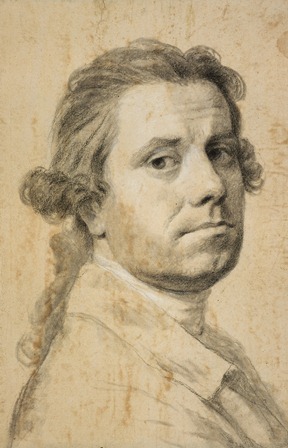New Allan Ramsay exhibition at Scottish National Gallery next month
 BIRTHDAY OF SCOTLAND’S GREATEST 18TH CENTURY ARTIST TO BE CELEBRATED IN NEW DISPLAY
BIRTHDAY OF SCOTLAND’S GREATEST 18TH CENTURY ARTIST TO BE CELEBRATED IN NEW DISPLAY
Allan Ramsay at 300
19 October 2013 – 4 February 2014
Scottish National Gallery, The Mound, Edinburgh, EH2 2EL
Telephone: 0131 624 6200 | Admission free
Celebrating the 300th anniversary of the birth of Allan Ramsay, one of Scotland’s most important artists, this exhibition of around 30 beautiful drawings from the Scottish National Gallery’s unrivalled holdings will include some of his earliest known works. The son of the distinguished poet of the same name, Allan Ramsay (1713 – 1784) became internationally renowned for his outstanding portraits of royalty and Enlightenment figures, several of which hang prominently in both the Scottish National Gallery and the Scottish National Portrait Gallery.
Born in Edinburgh, Ramsay received his first artistic training at the city’s Academy of St Luke. His father then raised funds to send him to Rome, where he studied at the French Academy and drew alongside emergent artists such as Pompeo Batoni. On his return to the UK, Ramsay based himself in London but kept a studio in Edinburgh. Through the influence of John Stewart, 3rd Earl of Bute, Ramsay was introduced to the Prince of Wales and on the latter’s accession to the throne as King George III, became the king’s painter – the highest honour to which a British artist could aspire.
Ramsay produced hundreds of drawings across his career, working largely in red or black chalks, heightened with white, on differing shades and colours of paper. Whether highly finished works in their own right, sketches made in training or preparatory studies for larger compositions, they demonstrate the incredible drawing and modeling skills which underpin the artist’s painted portraits and offer a glimpse of personal aspects of his life. The National Galleries of Scotland’s collection of drawings by Ramsay represents the largest holding of the artist’s graphic oeuvre worldwide.
Commenting on the exhibition, Director of the Scottish National Gallery, Michael Clarke, said ‘Ramsay was one of the most cultured and able of all Scotland’s great artists, as this selection of his drawings and watercolours reveals. Because he was primarily known as a portrait painter, he is sometimes not given the recognition he richly deserves. His refined style drew on British and Continental traditions (particularly those of France and Italy) and he was an artist of European stature.’
One exhibition highlight will be a series of drawings which relate to Ramsay’s painting Queen Charlotte with her two Eldest Sons (c. 1764-9), now in the Royal Collection at Buckingham Palace. An idealised study of the head and shoulders of Prince George, dating from 1764-65, in black chalk heightened with white on blue paper, is presented alongside two impressive compositional studies. Perhaps more than the resulting painting, the drawings combine the grand trappings of late Baroque Court portraiture with the tender portrayal of an intimate family group. Another royal subject, which shows Ramsay’s extraordinary use of line and precision, is a detailed study for the crown that appears resting on the table in Ramsay’s portrait King George III in Coronation Robes (1763), a version of which can be seen at the Scottish National Portrait Gallery.
Several drawings going on display were made during visits Ramsay made to Italy from 1736 – 38, 1754 – 57 and 1775 – 77. It was during the second visit that the artist developed the elegant drawing-style which characterizes the preparatory chalk studies he made following his return to London. While in Italy Ramsay also made drawings of the countryside around Rome; a number of studies of the Colosseum; practiced drawing from life, and made many studies after the Old Masters.
A sketchbook dating from c. 1730 – 1731 is one of the earliest surviving examples of the artist’s work. It contains drawings from his early studies at the Academy of St Luke. Other very early works on display include a self-portrait and a portrait of his father, both made when Ramsay was only twenty years old. These will be complemented by a simple, intimate study of the artist’s daughter Amelia Ramsay (later Lady Campbell) made in 1776 when she was twenty-one. Created three years after an accident in which Ramsay permanently damaged his painting arm, this drawing was composed on the Isle of Ischia off the coast of Naples, which Ramsay visited so that he could treat his arm in the famous curative baths.
Also on display will be a beautiful red chalk drawing of a lady’s hand holding a Rose, made as a study for what is possibly Ramsay’s most famous painting, a portrait of his second wife, Margaret Lindsay (currently displayed at the Scottish National Portrait Gallery) which shows the exceptional delicacy of Ramsay’s mature style.